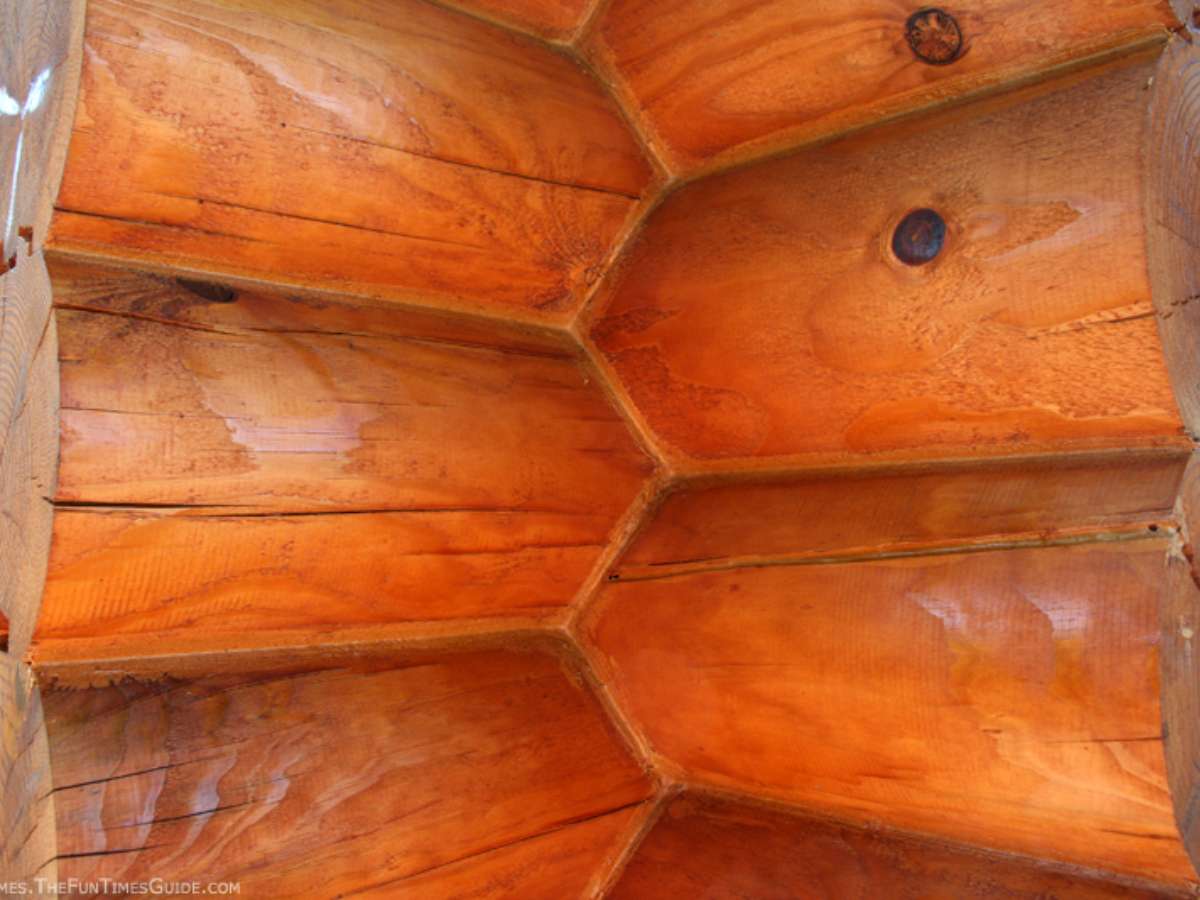Dream of living in a log home? (Me too.)
If your dream is to live in an old log house, you might want to think twice about it.
Certainly, there are lots of good reasons to live in an old log home, but there are also a few reasons not to.
It may have stood for 100 years or more and survived the elements season after season, but old log cabins do have their problems.
Unfortunately, in many cases, when it comes to purchasing an older log home, the house inevitably has to be taken down and rebuilt.
If you’re looking at one to purchase, here are the pros and cons of being the owner of an old style log home.
The Cons
#1 – Check the inside chinked walls. If there are water marks or stains, this means there is water coming in through the gaps and the chinking on the outside needs attention. Perhaps it’s not meeting the logs.
#2 – Another way water could come into the house through the chinking is that the log ends might be rotting or breaking down. Water enters through the open cracks of the log ends and travels down the center of the log and into the house through the chinking. Cement or Perma-chink could solve the problem. The log ends are particularly prone to rot and those open cracks and splits can cause a lot of damage. Due to the ever-present fear of rot, it’s not advised to grow vines against the outside walls, have flowers in window boxes, or even use shutters on a log home. The outside walls need stay dry.
#3 – Are the logs in good shape — especially the bottom logs? If the foundation is poor or there is no cellar or basement, the house will be just above ground level. Often these logs are the first to rot.
#4 – Wood shrinks and expands with the changing weather, so be prepared to do regular maintenance to the chinking. There are synthetic chinkings available that stretch and shrink with the logs over time, but settling is just a part of log home living.
#5 – Often, the logs are square cut in older log homes, so the chinked areas can be quite wide — almost the width of the logs themselves. Decorating can be difficult on the inside walls, because paintings don’t hang where you want them in these old log homes.
#6 – Log home doors and windows tend to stick with the changing moisture levels, and they don’t always return to normal. You could shave it a little, but in another 12 months or so, daylight might be visible through the trim. Here’s a good fix for log home doors that are difficult to open and close.
#7 – Ants, mice, insects and other little creatures can find their way into a log home quite easily by entering cracks in the log ends and following their well beaten tracks. Field mice have no trouble getting into a space 1/4″ wide. Woodpeckers love log houses too. They see them as giant tree trunks.
#8 – There will be a lot of updating to do. You can do this over time, of course. But buying an older home typically entails a lot of sweat equity in the process of making the home your own.
#9 – Although log homes tend to survive fires better than stick built homes, fire insurance rates could be higher than the cost to insure a traditional home in your area. One of the reasons is the fact that log homes tend to be built in more remote places, farther away from fire hydrants and fire stations.
Must Read: Log Home Insurance: Little-Known Facts About Insuring A Log Home
The Pros
#1 – If you’re buying an old log home to move onto your land, there is a lot less involved than building a new house from scratch. You’ll likely get the whole house — which includes beams, floorboards, windows (which should be updated), and doors. Sure, there will be some reassembly required, but that’s nothing compared to building an entire home from scratch.
#2 – Moving into an old log home will probably be much cheaper than building a new house because you have all the important materials. You’ll just need the foundation and licensed trades people. You’ll probably spend 60% to 70% of the cost of building a new home (not including the land).
#3 – Preserving and living in an old log home is a very green thing to do! It’s one less new house being built. Think about it… using resources to build big new “green” homes to save resources just seems ironic. There are 130 million existing homes in the U.S.; half were built before 1972.
#4 – You’ll be living in a house with a lot of history and saving a bit of of the past at the same time. Here’s how to create a House History Log for your home.
#5 – Since log walls can be anywhere from 10- to 12-inches thick and there are no air-pockets in the walls of log homes, as long as you practice regular maintenance you’ll find your house is very cool in the summer and very warm in the winter.
#6 – Well-maintained log homes purchased where they stand are a good investment. They rarely come up for sale and when they do, they often fetch more than that of a conventional home. Just make sure you take the necessary steps to protect your log home… and your investment.
#7 – You’ll have the pleasure of curling up with a good book by the fire. Log homes offer a more homey comfortable feeling than most modern homes do. Log homes are definitely more comfortable, cozy and homey… from the minute you walk in the front door.
#8 – You’ll have lots of visitors. Friends and family will enjoy their weekends spent in a rustic log house in the country. There’s a certain allure to log cabin homes.
#9 – You will be the proud new owner of a log home that has its own unique look and feel. How you choose to decorate it is completely up to you. Chances are, you will find some creative ways to mix the old and new.
Must Read: How To Customize A Small Log Cabin
Old log homes can be a joy to live in, but — if you don’t do enough research ahead of time — they can also be a source of frustration.
If you do end up buying an older log home, just be sure to practice good maintenance inside and out. Then, you’ll definitely be happy that you made the investment!
Before You Move Into An Old Style Log Home…
If you’re thinking of moving into an older log house, here are a few more things to think about before you make that big decision.




